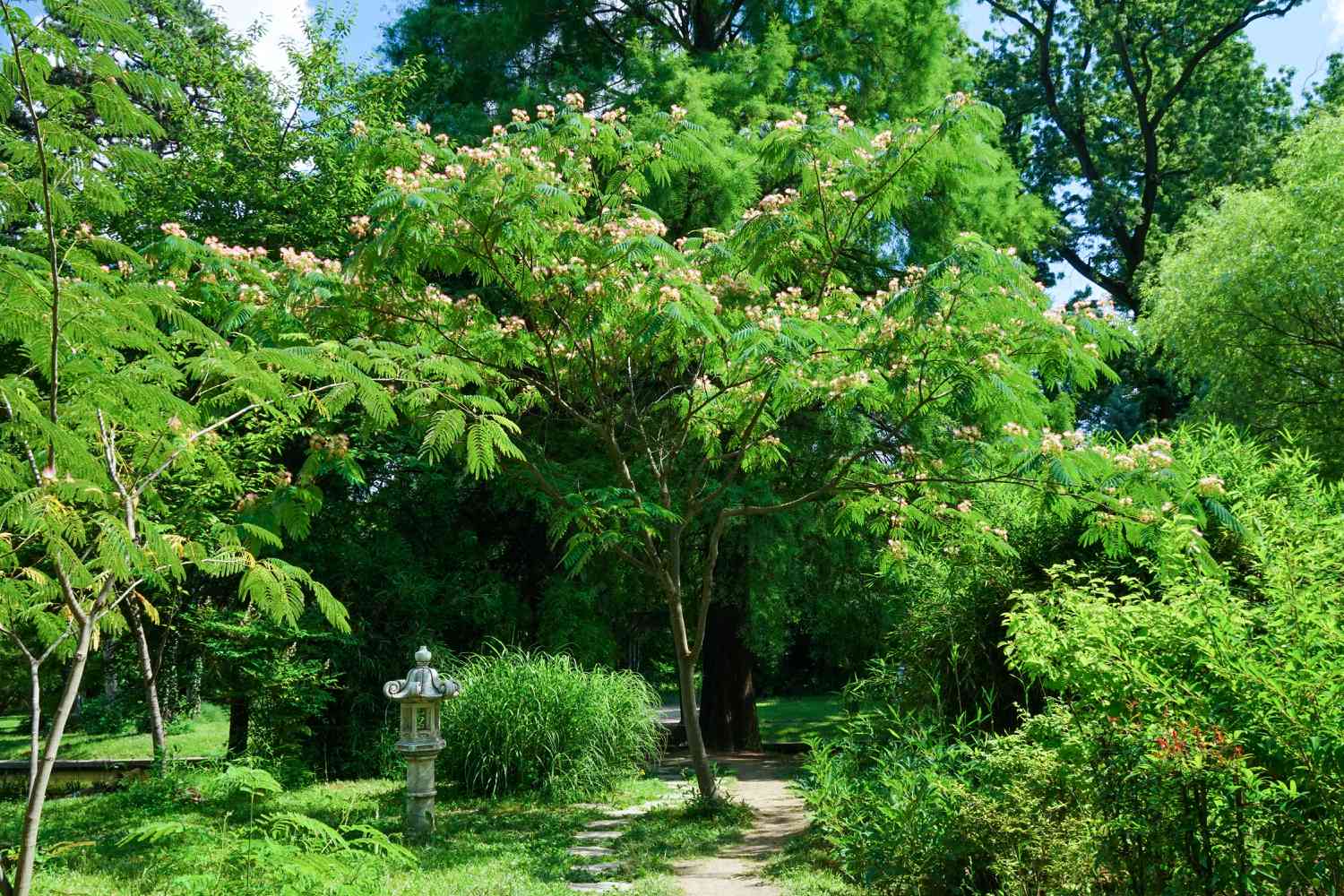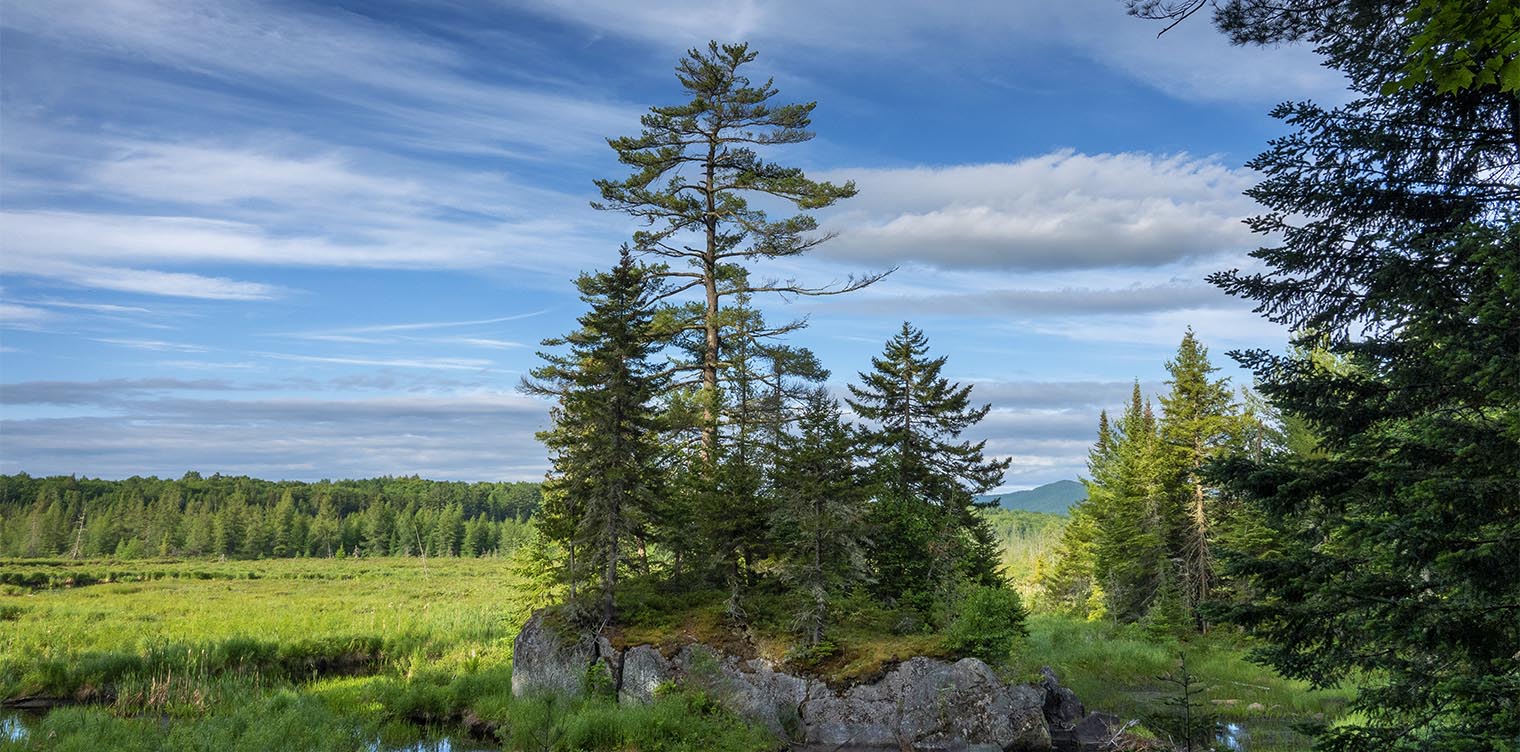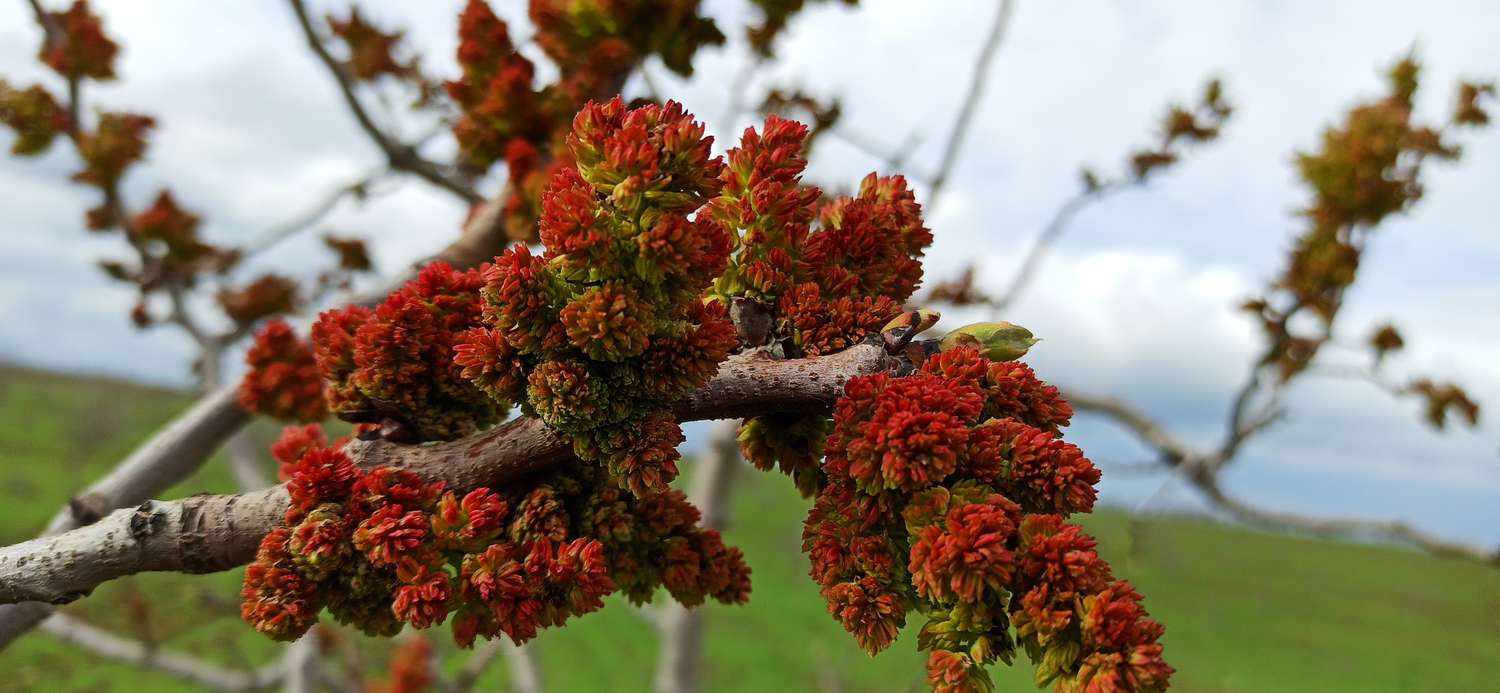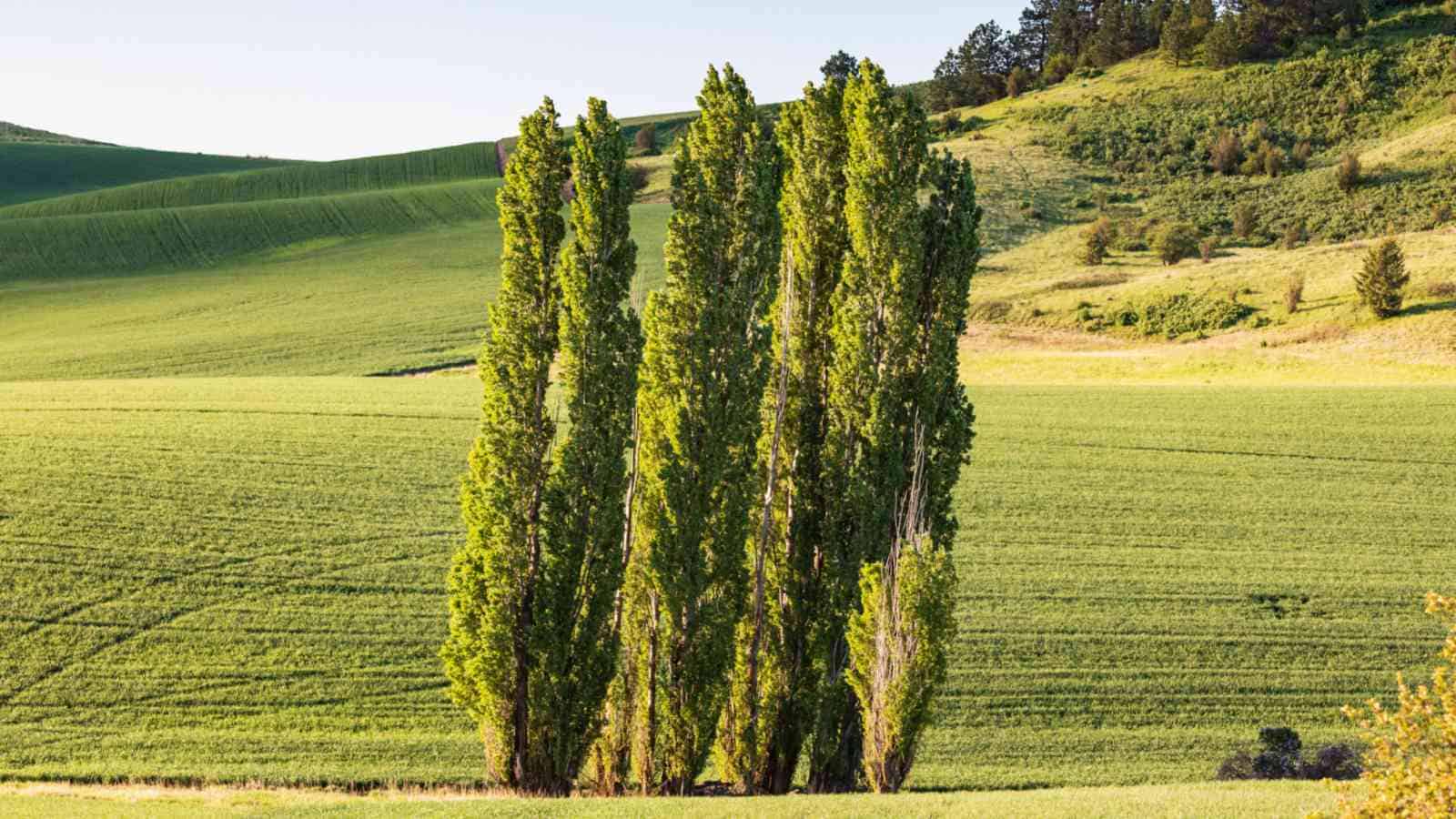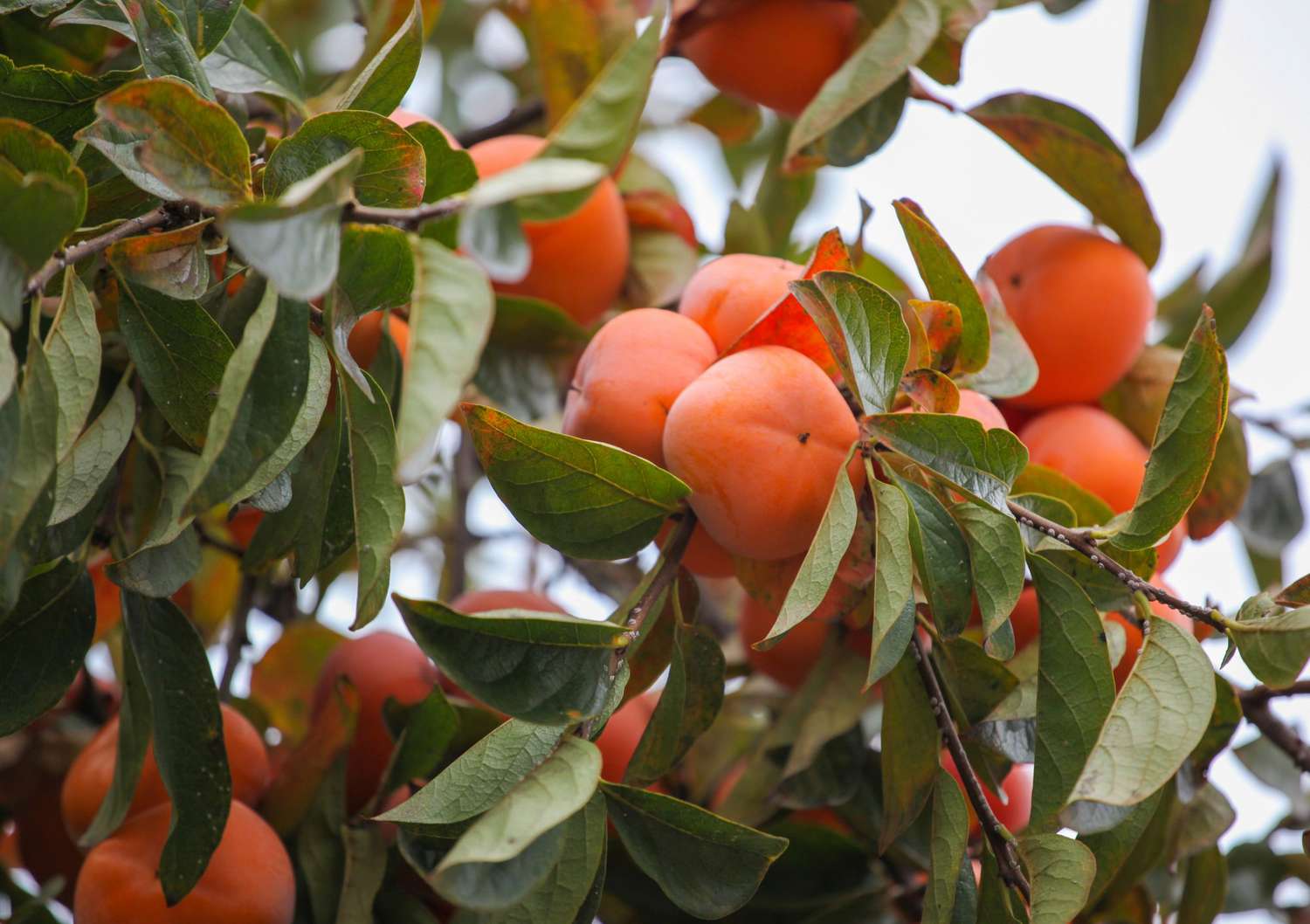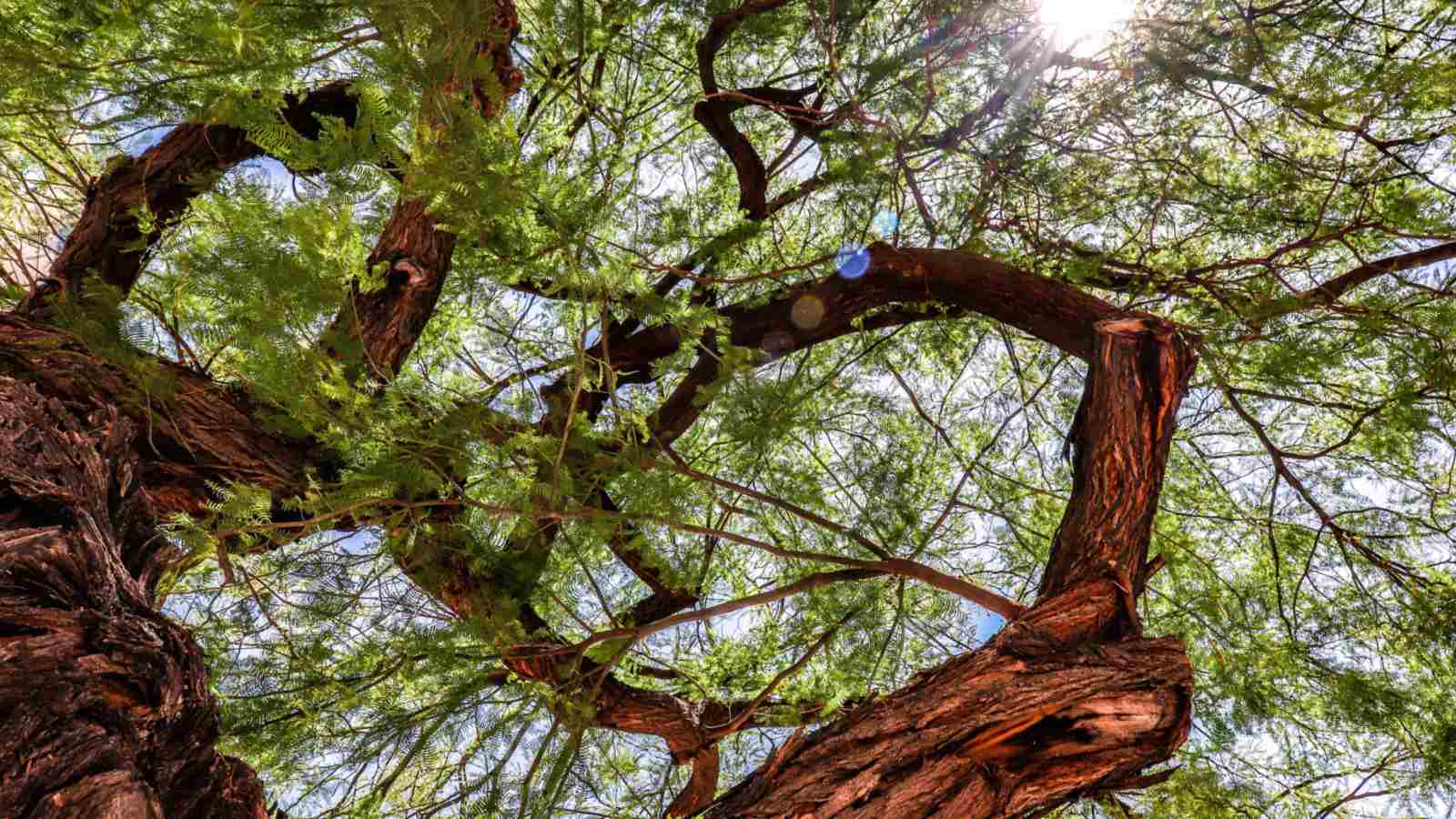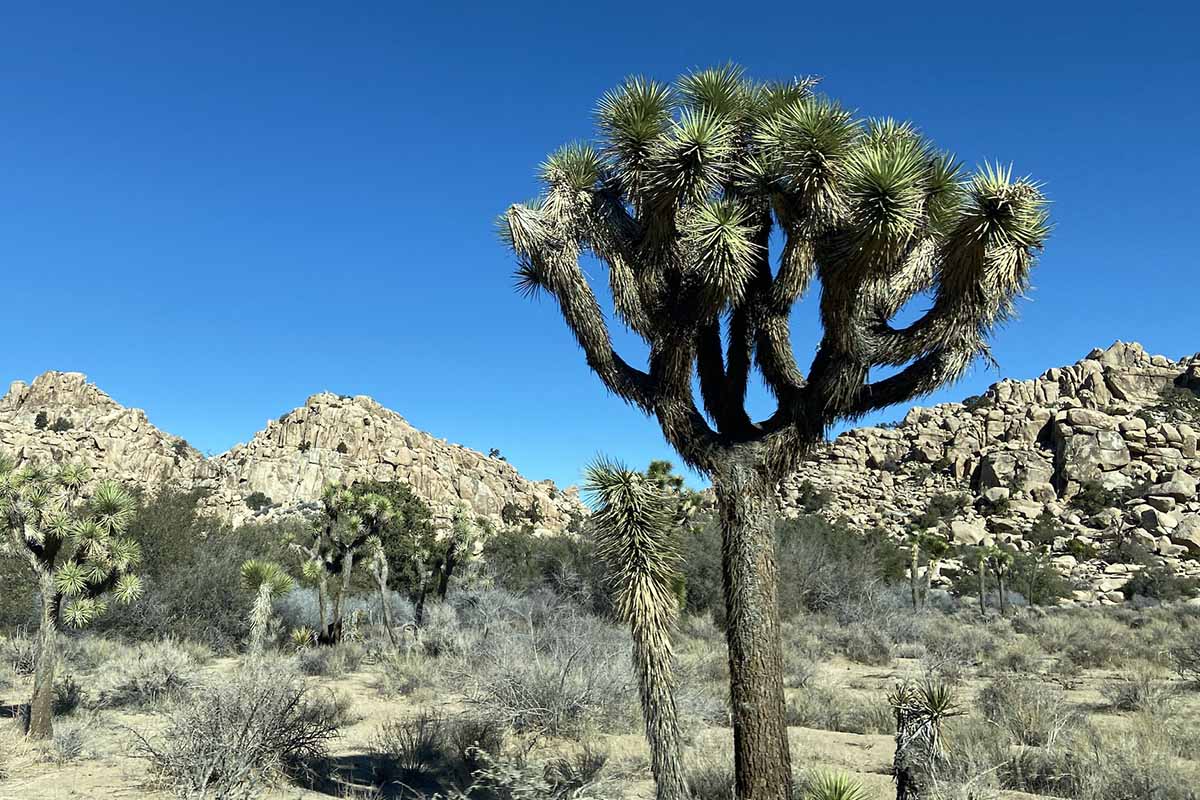Home>Gardening News and Trends>Latest News>Where Do Baobab Trees Grow
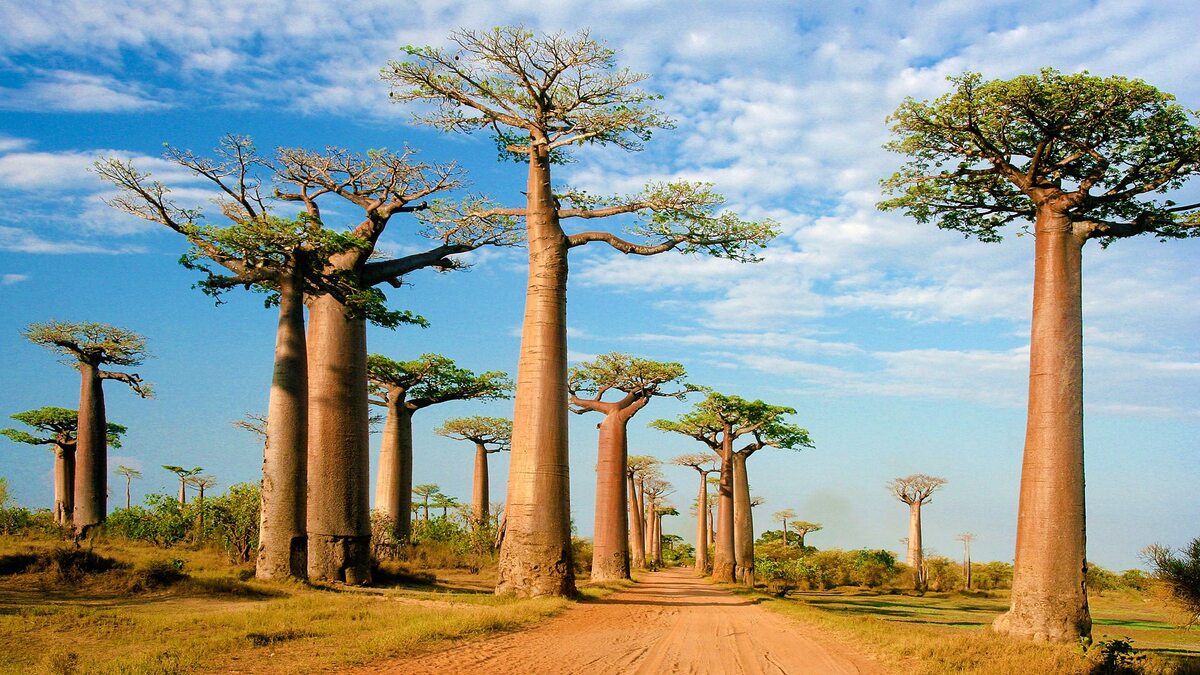

Latest News
Where Do Baobab Trees Grow
Modified: February 8, 2024
Discover the latest news on where baobab trees grow and explore their unique habitats. Stay updated with the most recent information on these iconic trees.
(Many of the links in this article redirect to a specific reviewed product. Your purchase of these products through affiliate links helps to generate commission for Chicagolandgardening.com, at no extra cost. Learn more)
Table of Contents
- Introduction
- Overview of Baobab Trees
- Origin and Distribution of Baobab Trees
- Baobab Trees in Africa
- Baobab Trees in Australia
- Baobab Trees in Madagascar
- Baobab Trees in the Arabian Peninsula
- Baobab Trees in the Americas
- Unique Characteristics of Baobab Trees
- Importance of Baobab Trees in Ecosystems
- Conservation Efforts for Baobab Trees
- Conclusion
Introduction
Baobab trees, also known as the “upside-down trees” or “tree of life,” are majestic and iconic trees that captivate the imagination with their unique appearance and rich history. These ancient trees, with their stout trunks and sprawling branches, have long been a symbol of strength, resilience, and longevity.
In this article, we will delve into the fascinating world of Baobab trees, exploring their origin, distribution, and significance in various regions around the globe. From Africa to Australia, Madagascar to the Arabian Peninsula, and even the Americas, these remarkable trees have left an indelible mark on the landscapes and cultures of different nations.
Baobab trees are not only visually striking but also hold great ecological importance. Their ability to survive in harsh environments, store massive amounts of water, and provide shelter and sustenance for various species make them vital components of many ecosystems. However, despite their significance, Baobab trees face numerous challenges and require conservation efforts to ensure their survival for future generations.
Join us as we embark on a journey that uncovers the wonders of Baobab trees and highlights the need to protect these ancient giants. From their impressive growth patterns to their cultural significance, we will explore the diverse aspects of Baobab trees that continue to inspire awe and admiration.
Overview of Baobab Trees
Baobab trees, scientifically known as Adansonia, are large, iconic trees that belong to the Malvaceae family. They are known for their distinctive appearance, with stout and swollen trunks that can reach enormous sizes. These magnificent trees have a lifespan of up to thousands of years.
One of the most remarkable features of Baobab trees is their unique shape, often described as “upside-down.” The branches of the tree spread out like roots, creating an otherworldly and captivating silhouette against the backdrop of the sky.
There are nine recognized species of Baobab trees, each with its own characteristics and distribution. These species include the African Baobab (Adansonia digitata), the Australian Baobab (Adansonia gregorii), and the Madagascar Baobab (Adansonia grandidieri), among others.
Baobab trees are well-adapted to survive in arid and semi-arid regions, where other plant life struggles to thrive. They have evolved unique survival mechanisms, such as their ability to store large quantities of water in their trunks and branches during the rainy season, enabling them to withstand prolonged periods of drought.
Furthermore, Baobab trees have adapted to their environment by developing thick, fire-resistant bark that protects them from wildfires, a common occurrence in many of the regions where they grow. This adaptation allows Baobab trees to not only survive but also regenerate and continue their growth even after being exposed to fire.
In addition to their fascinating physical characteristics, Baobab trees have significant cultural and spiritual importance in many societies. They have been used for centuries by indigenous communities for various purposes, including food, medicine, and even as places of worship.
Overall, Baobab trees are not only visually captivating but also play a vital role in the ecosystems they inhabit. Their resilience and adaptability in challenging environments have earned them the reputation as the “tree of life.”
Origin and Distribution of Baobab Trees
The origins of Baobab trees can be traced back millions of years to the ancient landmass of Gondwana. As the continents began to separate, the ancestors of Baobab trees dispersed and adapted to different regions across the globe.
The African continent is widely regarded as the primary center of diversity for Baobab trees. The African Baobab (Adansonia digitata) is the most well-known and widespread species, found in numerous countries including Senegal, Mali, Tanzania, and South Africa. These majestic trees have ingrained themselves into African culture and are often referred to as the “African tree of life.”
Apart from Africa, Baobab trees can also be found in other parts of the world. The Australian Baobab (Adansonia gregorii) is native to the Kimberley region in Western Australia. The boab, as it is commonly known, has become an iconic symbol of the Australian outback.
Madagascar, known for its unique and diverse flora and fauna, is home to several species of Baobab trees. The most famous is the Madagascar Baobab (Adansonia grandidieri), characterized by its bottle-shaped trunk and stunning crown of branches. These trees have become a symbol of the island’s natural heritage.
The Arabian Peninsula, specifically Yemen and Oman, is another region where Baobab trees can be found. The species Adansonia digitata, known as the “Qalhat Baobab,” is a testament to the adaptability of Baobab trees in harsh desert environments.
Surprisingly, Baobab trees have even made their way to the Americas. They were introduced by enslaved African people during the transatlantic slave trade and have managed to establish themselves in various countries, including Brazil, Cuba, and Puerto Rico.
Despite their wide distribution, Baobab trees are relatively rare and often occur in isolated populations. They are typically found in hot, dry climates, making their survival and growth a testament to their ability to adapt to challenging conditions.
The dispersal of Baobab trees across different continents is a testament to the resilience and adaptability of these remarkable trees. Their presence in various regions has not only shaped the landscapes but also influenced the cultures and traditions of the local communities.
Baobab Trees in Africa
Africa is the heartland of Baobab trees, where they have been an integral part of the continent’s landscapes, cultures, and ecosystems for centuries. The African Baobab (Adansonia digitata) is especially prevalent, and its presence is deeply engrained in both rural and urban areas.
These iconic trees can be found across the African continent, from the savannas and grasslands of East Africa to the arid deserts of the Sahel region. They are known by various names in different African languages, such as “baobab” in English, “mbuyu” in Swahili, and “gorimbo” in Shona.
Baobab trees have great significance in the cultural and spiritual practices of many African communities. They are considered sacred trees and are often associated with wisdom, strength, and longevity. Many myths and legends surround Baobab trees, further enhancing their cultural importance.
The African Baobab is a massive tree, capable of reaching heights of up to 25 meters and trunk diameters of 10 meters or more. These trees have a lifespan of several centuries, with some individuals estimated to be over 6,000 years old. Their imposing presence and longevity make them natural landmarks in the African landscape.
In addition to their cultural value, Baobab trees provide numerous practical benefits to local communities. Various parts of the tree, including the leaves, fruits, seeds, and bark, have traditional medicinal uses. The fruit, known as “monkey bread,” is rich in vitamin C and other essential nutrients, making it a valuable food source, especially during times of drought.
The hollow trunks of Baobab trees have been used for different purposes throughout history. In some areas, they have served as water reservoirs, capable of storing thousands of liters of water, which is crucial during times of scarcity.
Despite the cultural and ecological importance of Baobab trees in Africa, they face numerous threats. Deforestation, land degradation, and the impacts of climate change pose significant risks to their survival. Conservation efforts are in place to protect these majestic trees and promote their sustainable management.
Baobab trees in Africa symbolize the continent’s rich biodiversity and cultural heritage. Their towering presence, medicinal properties, and cultural significance make them a truly iconic and irreplaceable part of Africa’s natural landscape.
Baobab Trees in Australia
Australia, known for its unique flora and fauna, is also home to a fascinating species of Baobab tree – the Australian Baobab (Adansonia gregorii). These majestic trees have found their place in the iconic Australian outback, adding to the country’s natural beauty and ecological diversity.
The Australian Baobab, commonly referred to as the “boab,” is native to the Kimberley region in Western Australia. These trees have adapted to thrive in the harsh and arid climate of the region, showcasing their resilience and ability to withstand extreme weather conditions.
One of the distinguishing features of the Australian Baobab is its stout and bottle-shaped trunk, which can reach impressive diameters of up to 15 meters. The trunks are often adorned with whimsical shapes and carvings, created by both nature and human intervention, adding to their appeal and uniqueness.
These magnificent trees play a crucial role in their ecosystem, serving as a source of food, shelter, and water for various species. The hollow trunks of the Australian Baobab have been utilized by both humans and animals for centuries. Indigenous communities have used them as shelter, storage containers, and even as ovens for cooking.
Like their African counterparts, the Australian Baobab produces fruit, also known as “boab nuts.” These nuts are renowned for their nutritious properties and have been consumed by Indigenous communities for centuries. They are rich in vitamin C, calcium, and other essential nutrients.
The cultural significance of the Australian Baobab is deeply rooted in the traditions and stories of the Aboriginal people. These trees are considered sacred and are associated with creation stories, dreaming tracks, and spiritual beliefs.
Unfortunately, the Australian Baobab, like many other plant species, faces threats from habitat destruction, invasive species, and climate change. Efforts are underway to protect and conserve these incredible trees, including the establishment of protected areas and promoting community involvement in conservation initiatives.
The Australian Baobab serves as a symbol of the unique biodiversity found in the continent. Its ability to thrive in challenging environments and its cultural significance make it a valued and cherished part of Australia’s natural heritage.
Baobab Trees in Madagascar
Madagascar, the world’s fourth-largest island, is renowned for its incredible biodiversity and unique ecosystems. It is also home to several species of Baobab trees, including the iconic Madagascar Baobab (Adansonia grandidieri), which has become emblematic of the island’s natural heritage.
The Madagascar Baobab is a truly remarkable tree, known for its distinctive bottle-shaped trunk and striking crown of branches that resemble spreading roots reaching towards the sky. These trees can reach heights of up to 30 meters and diameters exceeding 10 meters. Their imposing presence makes them stand out in the Madagascan landscapes.
One of the most intriguing aspects of the Madagascar Baobab is its adaptation to the island’s arid and semi-arid conditions. These trees have developed unique mechanisms for survival, including their ability to store vast amounts of water within their trunks. This adaptation allows them to thrive in regions with irregular rainfall patterns and extended dry seasons.
The Madagascar Baobab holds great cultural and spiritual significance to the Malagasy people. It is considered a symbol of strength, endurance, and resilience. Many communities believe that these trees are inhabited by spirits and hold sacred rituals and ceremonies in their presence.
The fruit of the Madagascar Baobab, called “monkey bread,” is a vital resource for both humans and wildlife. The fruit is rich in vitamin C and is used in traditional cuisine, medicine, and as a source of income through its commercialization.
Regrettably, the Madagascar Baobab, along with other plant species on the island, faces numerous threats. Forest fires, land conversion for agriculture, and illegal logging pose significant challenges to the survival of these magnificent trees. Conservation efforts are being implemented to protect the remaining populations and raise awareness about their importance.
Given its unique characteristics and importance to the Malagasy culture, the Madagascar Baobab has become an iconic symbol of the island. It represents the resilience and beauty of Madagascar’s natural world and serves as a reminder of the need to protect and preserve this extraordinary ecosystem.
Baobab Trees in the Arabian Peninsula
The Arabian Peninsula, known for its vast deserts and extreme climates, is not typically associated with lush vegetation. However, hidden within this arid landscape, one can find a surprising sight—the majestic presence of Baobab trees.
The Arabian Peninsula is home to the species Adansonia digitata, commonly known as the “Qalhat Baobab.” These resilient trees have adapted to survive in the harsh desert conditions, showcasing their ability to thrive in environments where few other plants can.
The Qalhat Baobab is characterized by its stout trunk, reaching heights of up to 20 meters and diameters of 10 meters. The trees’ unique shape, with thick branches spreading outwards, creates a striking silhouette against the backdrop of the desert skyline.
These Baobab trees play a crucial ecological role in the Arabian Peninsula. Their ability to store large amounts of water within their trunks allows them to survive prolonged periods of drought. The trees also provide shelter and sustenance for various desert-dwelling species, acting as mini-ecosystems within the arid landscape.
The local communities within the Arabian Peninsula have recognized the value of these remarkable trees. Indigenous people have used various parts of the Baobab tree for traditional purposes, including creating shelters, making utensils, and utilizing the tree’s medicinal properties.
The Qalhat Baobab also holds cultural significance, with many legends and folklore associated with the trees. In some traditions, it is believed that the tree possesses spiritual powers, granting protection and good fortune to those who seek its shelter.
Despite their resilience, the Qalhat Baobab faces threats due to climate change, land degradation, and urbanization. Efforts are being made to protect and conserve these trees through habitat preservation, community involvement, and education about their importance to the region’s ecosystems and heritage.
The presence of Baobab trees in the Arabian Peninsula serves as a testament to nature’s adaptability and the remarkable complexity of the region’s fragile ecosystems. These ancient and awe-inspiring trees remind us of the importance of protecting and preserving the natural wonders that exist even in the harshest environments.
Baobab Trees in the Americas
While commonly associated with Africa and other regions, Baobab trees have also found their way to the Americas, where they have become a unique and fascinating part of the landscape. Their presence in this part of the world is a testament to the incredible journey these trees have undergone throughout history.
The Baobab trees that can be found in the Americas are primarily descendants of seeds brought by enslaved African people during the transatlantic slave trade. These seeds, carried with them on their arduous journey, were planted as a symbol of their African heritage and connection to their homeland.
Today, Baobab trees in the Americas can be found in various countries, including Brazil, Cuba, and Puerto Rico. They serve as living reminders of the resilience and strength of the African diaspora, acting as symbols of cultural heritage and perseverance.
The Baobab trees in the Americas share many similarities with their African counterparts, including their distinctive swollen trunks, unique growth patterns, and long lifespans. They have adapted to their new environments, thriving in tropical and subtropical regions.
These trees play an important ecological role in the Americas, providing food and shelter for local wildlife. Their large hollow trunks serve as nesting sites for birds and other small animals, while their fruits serve as a source of nutrition for various species.
Furthermore, Baobab trees in the Americas have a cultural significance that goes beyond their ecological importance. They serve as powerful symbols of resistance, strength, and the endurance of African culture in the face of adversity. They have become meeting places for community gatherings, celebrations, and cultural events.
Conservation efforts are in place to protect these precious Baobab trees in the Americas. These initiatives focus not only on preserving the trees themselves but also on raising awareness about their historical and cultural significance and educating communities on their importance to the local ecosystems.
Through their presence in the Americas, Baobab trees stand as reminders of the interconnectedness of cultures and the shared history between continents. They highlight the resilience of the human spirit and the ability of nature to transcend borders and thrive in diverse environments.
Unique Characteristics of Baobab Trees
Baobab trees are unmistakable, with their distinct appearance and remarkable adaptations. These ancient giants possess several unique characteristics that set them apart from other tree species:
- The Stout Trunk: Baobab trees are known for their impressive trunks, which can reach enormous sizes. These trunks are often bottle-shaped or cylindrical, providing stability and storing large amounts of water during dry periods. The trunks can also become hollow, creating unique habitats for animals and humans alike.
- Upside-Down Appearance: The branches of Baobab trees resemble the roots of an upside-down tree. This unique growth pattern captivates the imagination and adds to the mystical quality of these trees. The branches spread outwards, creating a magnificent canopy of foliage.
- Longevity: Baobab trees are known for their exceptional lifespans, with some individuals estimated to be over 6,000 years old. This longevity makes them some of the oldest living organisms on Earth. The trees’ ability to withstand droughts, fires, and other environmental challenges contributes to their extraordinary lifespan.
- Water Storage Adaptation: Baobab trees have evolved an incredible ability to store and retain water, enabling them to survive in arid and semi-arid regions. Their thick trunks and branches serve as reservoirs, allowing the trees to endure prolonged periods of drought by tapping into these internal water reserves.
- Ethnobotanical Uses: Baobab trees have been used by humans for centuries for various purposes. Different parts of the tree, including the leaves, fruits, seeds, and bark, have been utilized in traditional medicine, food, and even shelter. The fruits are particularly prized for their high nutritional value and are a source of sustenance for both humans and wildlife.
- Ecological Importance: Baobab trees play a vital role in multiple ecosystems. Their large hollow trunks serve as shelters and nesting sites for various animals, while the fruits attract pollinators and provide nutritious sustenance. The trees also contribute to soil fertility through the decomposition of their leaves and other organic matter.
These unique characteristics make Baobab trees a true marvel of nature. From their imposing size and appearance to their remarkable adaptations for survival, these trees continue to inspire awe and admiration among those who encounter them.
Importance of Baobab Trees in Ecosystems
Baobab trees play a crucial role in the ecosystems they inhabit, providing numerous benefits to both plants and animals. Their unique adaptations and ecological functions contribute to the overall health and sustainability of their surrounding environments:
- Water Storage and Distribution: Baobab trees have the remarkable ability to store large quantities of water within their trunks during the rainy season. This stored water can be accessed during dry periods, providing a vital resource for both the trees themselves and other species in the area. As such, Baobab trees act as natural water reservoirs, helping to sustain life in arid regions.
- Food and Shelter: The fruits, leaves, flowers, and nectar of Baobab trees serve as a valuable food source for a wide range of animals, including birds, bats, insects, and mammals. These trees attract pollinators, promoting biodiversity and supporting the reproduction of other plant species. The hollow trunks of Baobab trees also provide shelter and nesting sites for various animal species.
- Soil Fertility: Baobab trees contribute to soil fertility through the decomposition of their leaf litter and other organic matter. As their leaves fall and decompose, they release essential nutrients into the soil, enriching it and supporting the growth of other plants. In this way, Baobab trees play a vital role in nutrient cycling and the overall health of the ecosystem.
- Erosion Prevention: The extensive root systems of Baobab trees help prevent soil erosion. These roots bind the soil particles together, providing stability and preventing the loss of valuable topsoil. This is especially important in regions where strong winds and heavy rains can cause erosion and land degradation.
- Climate Regulation: Baobab trees have a positive impact on climate regulation. They sequester carbon dioxide from the atmosphere through their photosynthetic processes, helping to mitigate the effects of climate change. Additionally, their dense canopies provide shade, reducing temperatures and creating microclimates that support other plant species and provide relief from heat for animals.
- Cultural and Spiritual Significance: Baobab trees hold profound cultural and spiritual importance in many communities. They serve as symbols of heritage, wisdom, and resilience and play a central role in traditional ceremonies and rituals. Their presence contributes to cultural identity and a sense of connection to the natural world.
The ecological importance of Baobab trees cannot be overstated. Through their ability to store water, provide food and shelter, enhance soil fertility, prevent erosion, regulate climate, and hold cultural significance, these remarkable trees contribute to the overall balance and health of the ecosystems they inhabit.
Conservation Efforts for Baobab Trees
Recognizing the ecological importance and cultural significance of Baobab trees, conservation efforts have been implemented to protect and preserve these iconic species. These initiatives aim to address the various threats that Baobab trees face and promote their sustainable management:
- Habitat Protection: The establishment of protected areas, such as national parks and nature reserves, plays a crucial role in safeguarding Baobab tree populations. These protected areas help conserve the natural habitats where Baobab trees thrive, ensuring the long-term survival of these iconic species.
- Education and Awareness: Raising awareness among local communities, stakeholders, and the general public about the importance of Baobab trees is essential for their conservation. Educational programs, campaigns, and outreach initiatives help foster a sense of stewardship and promote responsible practices towards these magnificent trees.
- Sustainable Use and Management: Encouraging sustainable practices that benefit both humans and Baobab trees is a key aspect of conservation efforts. This includes promoting the sustainable harvest of Baobab fruits, leaves, and bark, ensuring that local communities can benefit economically while allowing the trees to reproduce and regenerate effectively.
- Research and Monitoring: Conducting scientific research and monitoring programs are crucial for understanding the ecology, biology, and threats facing Baobab trees. This information helps inform conservation strategies and management plans, ensuring that decisions are based on accurate data and scientific expertise.
- Community Involvement: Engaging local communities in the conservation of Baobab trees is vital for long-term success. Collaborative initiatives that involve local knowledge, traditional practices, and community-led conservation efforts help build a sense of ownership and empower communities to actively participate in protecting these valuable trees.
- Policy and Legislation: Developing and implementing policies and legislation that safeguard Baobab trees and their habitats is essential. Legal protections can help regulate activities such as logging, land conversion, and the sustainable use of Baobab resources, reducing illegal actions and ensuring the long-term conservation of these iconic trees.
By combining these conservation efforts, we can help ensure the continued survival and well-being of Baobab trees. Conserving these remarkable trees not only protects biodiversity and ecosystems but also preserves cultural heritage and the valuable contributions that Baobabs make to the environment and the communities that depend on them.
Conclusion
Baobab trees, with their unique characteristics and rich history, hold a special place in the natural world. From their distinctive upside-down appearance to their ability to store water and provide sustenance to wildlife, Baobab trees play a vital role in the ecosystems they inhabit.
These majestic trees are not only of ecological importance but also hold deep cultural and spiritual significance in many societies. They have become symbols of wisdom, strength, and endurance, connecting communities to their ancestral heritage and the natural world.
However, Baobab trees face numerous challenges that endanger their survival. Deforestation, land degradation, and climate change pose serious threats to these remarkable trees. Conservation efforts are crucial to protect them for future generations and ensure their continued ecological and cultural contributions.
Through habitat protection, education, sustainable management, research, and community involvement, we can work towards the preservation of Baobab trees. By raising awareness and promoting responsible practices, we can foster appreciation for these magnificent trees and inspire actions to safeguard their habitats.
Conserving Baobab trees is not just about preserving a species; it is about recognizing the interconnectedness of nature and the invaluable role that these trees play in supporting biodiversity, ecosystems, and the cultural fabric of societies.
As we continue to appreciate the beauty and significance of Baobab trees, let us strive to be stewards of the natural world and advocate for their protection. By working together, we can ensure that these ancient giants continue to thrive, enriching our planet with their grandeur and serving as a powerful reminder of the wonders of nature.

